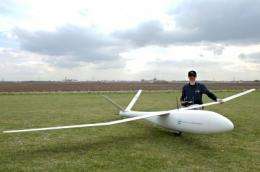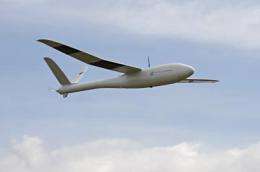Micro aircraft IMPULLS improves avionic systems and sensors

Myriad sensors and systems provide modern aircraft with data for flight control. But a bird's eye perspective is also of great benefit when measuring pollutants, searching for missing persons and even in archaeological research. Postgraduate students at the Technische Universitaet Muenchen have now developed an unmanned aerial vehicle that can be deployed for many such tasks. It successfully completed its maiden flight yesterday.
A novel test aircraft of the TU Muenchen successfully completed its maiden flight yesterday at the airfield of the MFC Red Baron near Heimstetten. The micro aircraft christened "IMPULLS" (Innovative Modular Payload UAV – TUM LLS) will facilitate testing aviation sensors and systems. It was jointly developed by postgraduate students at the Institute of Aircraft Design and the Institute of Flight System Dynamics in Garching. Propelled by a compact electric motor, the aircraft flies quietly and free of emissions.
A particularly important feature of the novel design is its modular construction. This allows the scientists to install a wide variety of systems to be tested under flight conditions. This also applies to components of the electric propulsion unit, since the scientists intend to use IMPULLS to investigate possible implementations of electric and hybrid propulsion systems in aircraft.
UAVs like IMPULLS are ideal for measuring atmospheric pollution, for aerial geo-surveying or monitoring the environment and infrastructures from above. A further field of deployment is information collection in emergencies and dangerous situations. Appropriately equipped UAVs can also be deployed in adverse weather conditions or hazardous situations that would pose an unreasonable risk to pilots.

"Thanks to advances in miniaturization and improved performance of sensor and avionics systems, we can use IMPULLS as a cornerstone for these kind of developments," says Professor Mirko Hornung, chair of the Institute of Aircraft Design. Deriving and understanding the associated business models and ranges of services are also topics that can be investigated using the IMPULLS platform.
IMPULLS has a wingspan of 5 meters and an empty weight of 20 kilograms. It is propelled by a two-kilowatt electric motor. The UAV can carry a payload of 10 kilograms and fly non-stop for up to 75 minutes. As in commercial aircraft, essential safety-relevant components are designed redundantly.
Provided by Technische Universitaet Muenchen

















